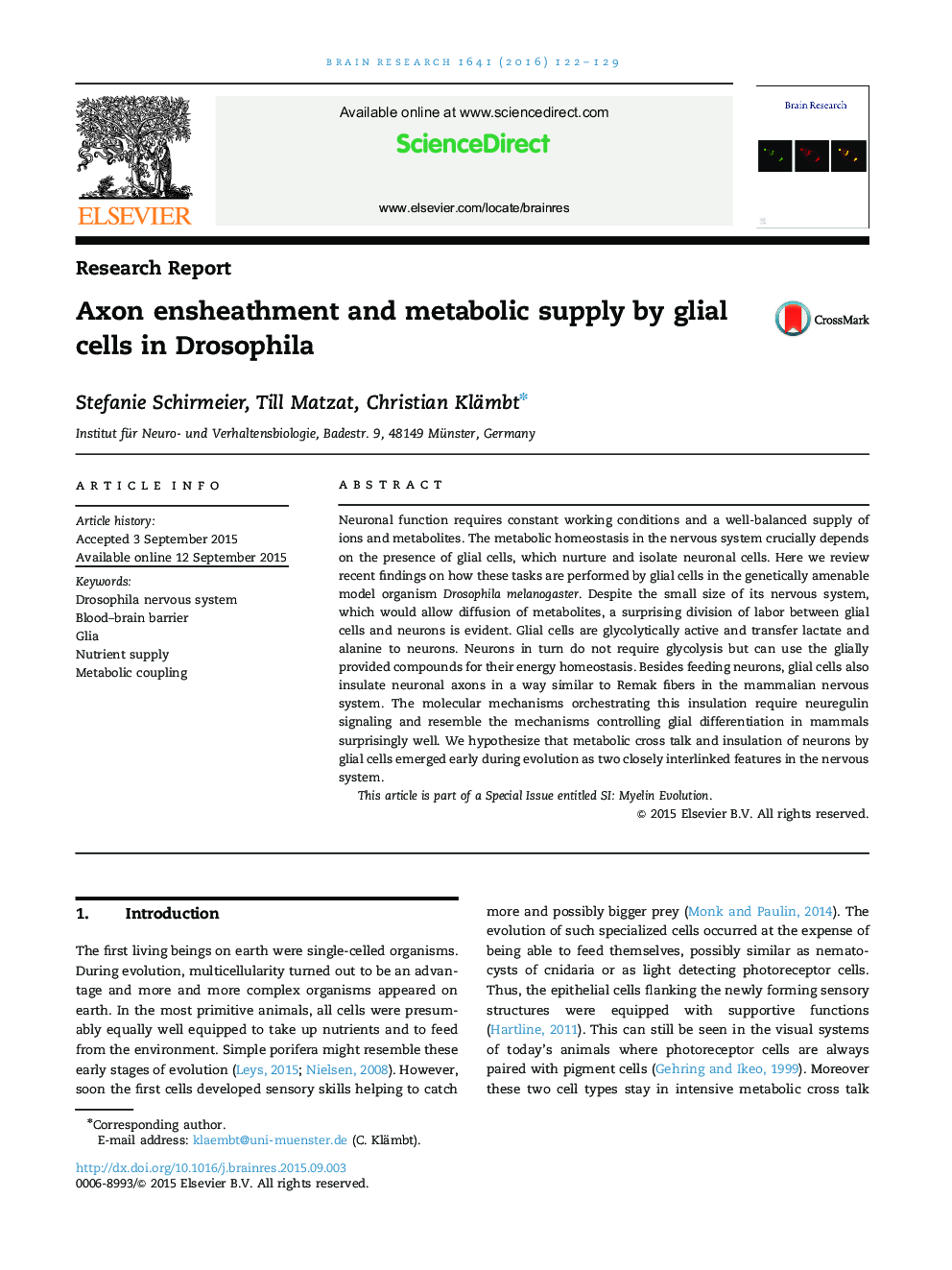| Article ID | Journal | Published Year | Pages | File Type |
|---|---|---|---|---|
| 6262512 | Brain Research | 2016 | 8 Pages |
â¢Summary of the current knowledge about axonal ensheathment in Drosophila.â¢Summary of the current knowledge about CNS carbohydrate metabolism in Drosophila.â¢Metabolic coupling in the CNS is discussed as a basic principle of neural function.
Neuronal function requires constant working conditions and a well-balanced supply of ions and metabolites. The metabolic homeostasis in the nervous system crucially depends on the presence of glial cells, which nurture and isolate neuronal cells. Here we review recent findings on how these tasks are performed by glial cells in the genetically amenable model organism Drosophila melanogaster. Despite the small size of its nervous system, which would allow diffusion of metabolites, a surprising division of labor between glial cells and neurons is evident. Glial cells are glycolytically active and transfer lactate and alanine to neurons. Neurons in turn do not require glycolysis but can use the glially provided compounds for their energy homeostasis. Besides feeding neurons, glial cells also insulate neuronal axons in a way similar to Remak fibers in the mammalian nervous system. The molecular mechanisms orchestrating this insulation require neuregulin signaling and resemble the mechanisms controlling glial differentiation in mammals surprisingly well. We hypothesize that metabolic cross talk and insulation of neurons by glial cells emerged early during evolution as two closely interlinked features in the nervous system.This article is part of a Special Issue entitled SI: Myelin Evolution.
